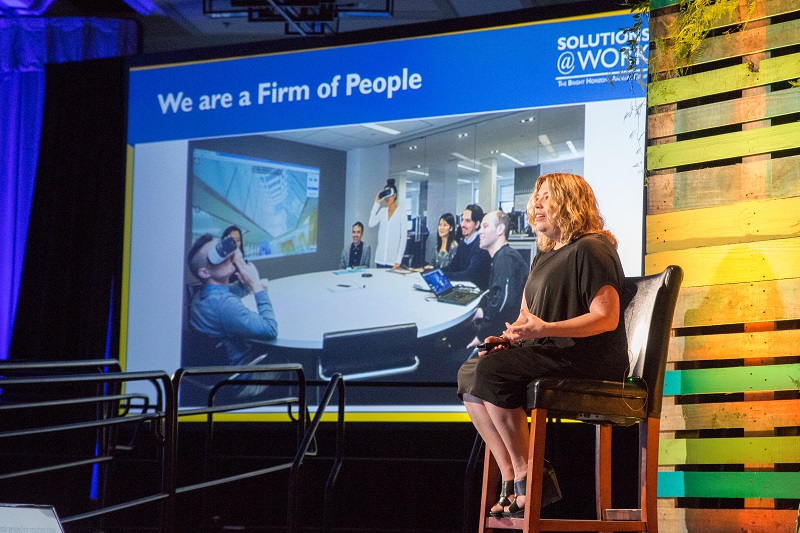Flex-time, unlimited vacation, 401k, parental leave. You've got it all.
But are your employees as happy as you think? Maybe...maybe not.
Fully leveraging your benefits requires effort beyond merely assembling them. And it's amazing how what you aren't doing can undermine the things that you're doing so well. And that's a shame since a new study says benefits matter...a lot. "Benefits packages are a make-or-break aspect of a job offer," says a study by Randstad US. They "can be an even stronger incentive than salary."
Looking to avoid squandering your valuable capital? With 2020 at hand, here are common downfalls of some of your most effective benefits, and how to fix them.
THE FIX - make sure flex is for all: Is your flex policy unofficial? Put it on paper, stat. Flextime backfires when it's meted out by need (the need often being parenthood). Worse it stirs resentment among those who can't use it toward those who can, while also branding the flex-enabled as less committed. Effective flex supports employees with kids...or cats. As Slate puts it: "You shouldn't need to be pregnant or have kids at home to get out of working late or answering emails at 9 p.m."
THE FIX - help people budget enough to save: Financial wellness is on the downslide. Many people can't even come up with $400 in a pinch. Before they start saving they have to start budgeting - and they have to know how. This is where financial wellness benefits come in. At Bright Horizons, our own Save Smart series helped people get control of their finances, and so increased 401k participation substantially.
THE FIX - draw people a map to come back: What's more important than leave is what happens when parents come back. And nothing about the post-leave road back is obvious. People need encouragement, manager support, and tangible assistance. No surprise, many companies are formalizing return-to-work programs that include reduced schedules, child care, and "returnship" systems to help ensure new parents can re-establish their pathways and re-invigorate careers.
THE FIX - make sure your managers are modeling: Vacation (or lack thereof) isn't a benefit problem - it's a culture problem: people are afraid to take off. The antidote? Show them how it's done. "Managers are company role models," wrote our own Andrea Wicks Bowles. "Encourage them to disconnect...really disconnect. Have them talk it up - about how time off fuels their energy and creativity while helping them avoid burnout."
That's the short list. Is there more? Sure. The Randstad study says people aren't just failing to use benefits - they don't know they have them. And that's a big miss since 42 percent of employees said they're considering leaving their current jobs because their benefits packages are inadequate. So choose your benefits wisely, support their use, and make sure your people can find them.
But are your employees as happy as you think? Maybe...maybe not.
Fully leveraging your benefits requires effort beyond merely assembling them. And it's amazing how what you aren't doing can undermine the things that you're doing so well. And that's a shame since a new study says benefits matter...a lot. "Benefits packages are a make-or-break aspect of a job offer," says a study by Randstad US. They "can be an even stronger incentive than salary."
Looking to avoid squandering your valuable capital? With 2020 at hand, here are common downfalls of some of your most effective benefits, and how to fix them.
Flex time
Time often bests money on employees' hierarchy, making flextime practically a salary boost. But it's not worth much if it costs careers. And Harvard Business Review says it often does, dooming parents to the second-rate-career "mommy track."THE FIX - make sure flex is for all: Is your flex policy unofficial? Put it on paper, stat. Flextime backfires when it's meted out by need (the need often being parenthood). Worse it stirs resentment among those who can't use it toward those who can, while also branding the flex-enabled as less committed. Effective flex supports employees with kids...or cats. As Slate puts it: "You shouldn't need to be pregnant or have kids at home to get out of working late or answering emails at 9 p.m."
401K
Only health insurance bests retirement funds on employees' wish lists. But roughly two-thirds of today's employees aren't taking part. And a dearth of 401k participation wastes a precious resource.THE FIX - help people budget enough to save: Financial wellness is on the downslide. Many people can't even come up with $400 in a pinch. Before they start saving they have to start budgeting - and they have to know how. This is where financial wellness benefits come in. At Bright Horizons, our own Save Smart series helped people get control of their finances, and so increased 401k participation substantially.
Parental leave
Working parents are a valuable resource, especially since increasing numbers are delaying parenthood until they're in their 30s, right when they're emerging as leaders and exceptionally valuable. So it's no surprise that splashy leave policies are all the rage. But generous leave is no antidote to turnover; and many working parents (mothers and fathers) told our Modern Family Index that new parenthood will likely prompt a job change.THE FIX - draw people a map to come back: What's more important than leave is what happens when parents come back. And nothing about the post-leave road back is obvious. People need encouragement, manager support, and tangible assistance. No surprise, many companies are formalizing return-to-work programs that include reduced schedules, child care, and "returnship" systems to help ensure new parents can re-establish their pathways and re-invigorate careers.
Vacation
Employees are dreaming about sun chairs and umbrella drinks. Yet even with the temptation of unlimited vacation policies, annually employees are still leaving hundreds of millions of days unused. The cost is in performance, with roughly 25% of the vacationless suffering from symptoms of burnout.THE FIX - make sure your managers are modeling: Vacation (or lack thereof) isn't a benefit problem - it's a culture problem: people are afraid to take off. The antidote? Show them how it's done. "Managers are company role models," wrote our own Andrea Wicks Bowles. "Encourage them to disconnect...really disconnect. Have them talk it up - about how time off fuels their energy and creativity while helping them avoid burnout."
That's the short list. Is there more? Sure. The Randstad study says people aren't just failing to use benefits - they don't know they have them. And that's a big miss since 42 percent of employees said they're considering leaving their current jobs because their benefits packages are inadequate. So choose your benefits wisely, support their use, and make sure your people can find them.





